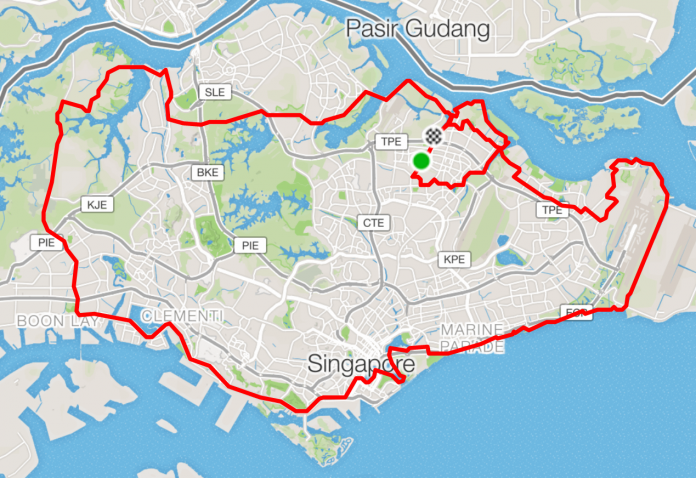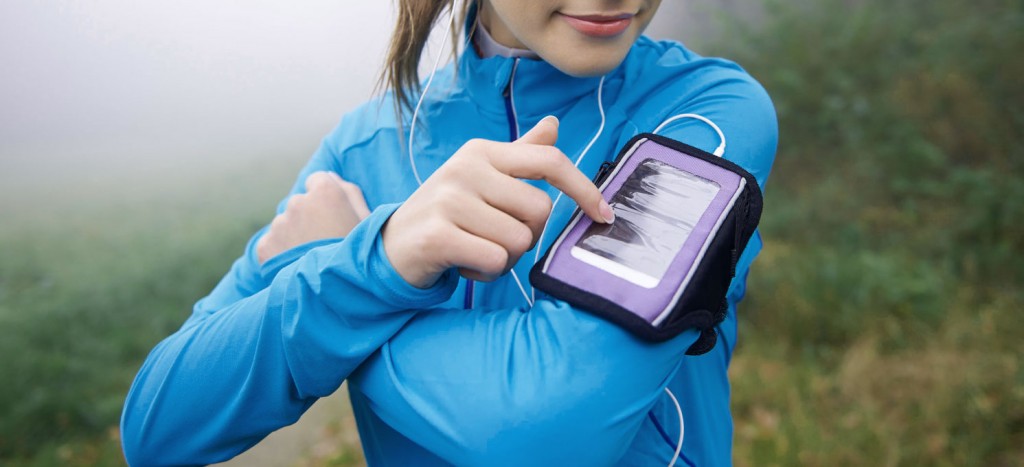The first time I did a round-the-island (RTI) ride, I was not at all familiar with the roads around Kranji and most of the western side of Singapore. But I managed to complete this 100+ km ride solo.
It goes without saying that my preparations were mainly on what you’d expect its done by anyone else these days – on Google Maps. The Street View feature also helps to see actual 360 photo as if you’re actually there, to identify landmarks on junctions you need to turn into.
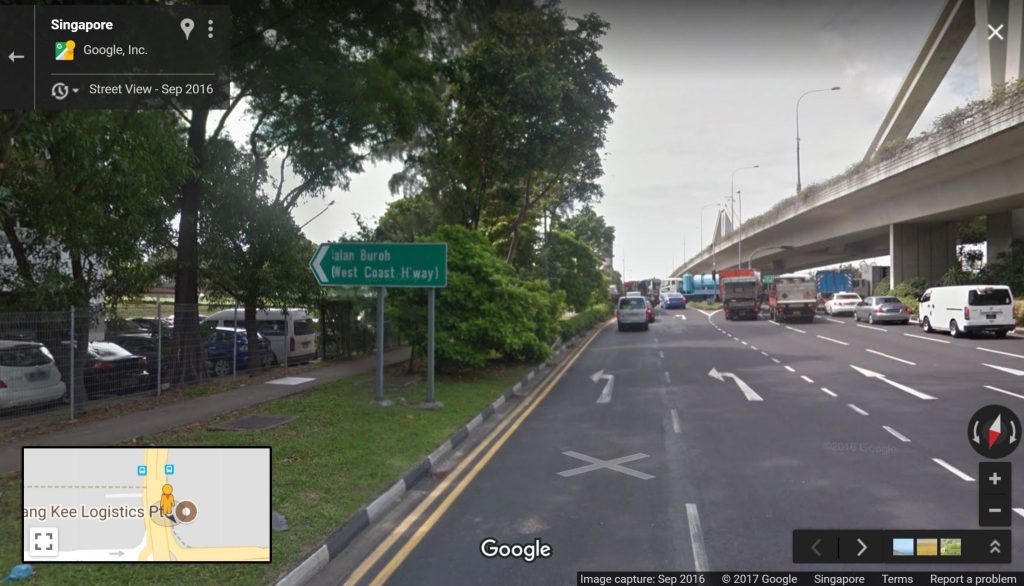
This though rely on having them recorded on your memory and to keep reminding yourself to watch for those landmarks. It can slip your mind when you are in the middle of a hard effort or you’re all settled and zoned out in a comfortable rhythm.
You can always stop once in a while to take out your phone to check where you are. The number of times you do this is proportional to how anxious you are about getting lost. Unlike that lady in the stock picture above, you won’t be smiling.
Or, you can use the course navigation feature of your Garmin device. And that’s how I did my first RTI solo with my Edge bike computer.
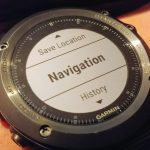
Garmin, before this era of fitness trackers, before the GPS watches and bike computers, were known for their navigation devices in cars. Their navigation know-how have also trickled down to their running and cycling devices (not available on all models) but requires more user intervention. Instead of keying in your destination and the device figure out the way on the fly, the full route needs to be setup ahead on Garmin Connect website and uploaded to the watch/bike computer.
I’ve also used this feature a lot on my Fenix 3 watch when trying out new routes. It is particularly helpful on trails where sometimes there are no signs/visual cues on where to turn. As was the case when I tried a new trail within the Central Catchment Nature Reserve.
(YouTube video - Exploring new trails w/in the Central Catchment Nature Reserve)
The watch will buzz your wrist when approaching a turn, when its time to turn, and if you end up off course.
If you’re the type who would rather run outside than on the hamster wheel of a hotel gym, this feature helps greatly when you are overseas, especially when there are no parks or pavements nearby.
I was just back from Cambodia and while it was my first time there, I was able to run on the streets of 2 cities to keep fitness.
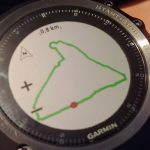
When I studied the map of Phnom Penh, I found that a lot of the places to see as a tourist are not that far away from each other. So on Garmin Connect website, I was able to plot a 10 km loop with the hotel as my start/end point.
(YouTube video - Running Around Phnom Penh)
Comparing the planned route (watch pic) vs the actual route I ran (video thumbnail), I actually deviated from my intended route between Central Market and Olympic Stadium (the diagonal line which is Charles De Gaulle Blvd). So after getting alerted that I have gone off course, I just made a few turns then I got back on course with confirmation buzz on my wrist.
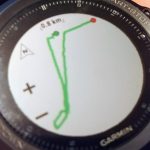
I was also at Siem Reap for the Angkor Wat International Half Marathon (read race review). The race pack collection venue was 2 km away from the hotel. Instead of riding a tuktuk, I plotted a route to run there. But rather than taking the most direct route , I swung it through a main road (yet another boulevard named after Charles De Gaulle) taking me to Pub Street then looping around the Old Market and going back but along the river then towards the venue.
(YouTube video - Running Around Siem Reap)
To me, this navigation function is a great enabler. Being concerned of getting lost in a new place – running or not – is perfectly normal. With a predefined GPS track to follow that surely won’t take you anywhere else, this can help assuage those fears and that may be the push that anyone needs to venture out.
In places where you may perceive is not totally safe to be outside running (apart from severe weather/environmental condition), this feature helps you keep moving as the route information you need are available with a buzz (approach, turn, off course) or quick glance on your wrist (where you are in the route, how far off). If you have to keep stopping somewhere to check where you are on your phone (or on an actual fold out map), it just screams “tourist here!” and that just might just attract unwanted attention to yourself.
Of course, you can always play it safe by choosing the hamster wheel in the hotel gym. There you can run without worries in airconditioned comfort while watching CNN.
Until they start reporting on Kim Jong Un.

The entire world isn’t that safe after all.
So, why not start exploring your hood (as Jacques De Wet posted earlier)? And don’t stop there. Follow your wrist and explore the world!


